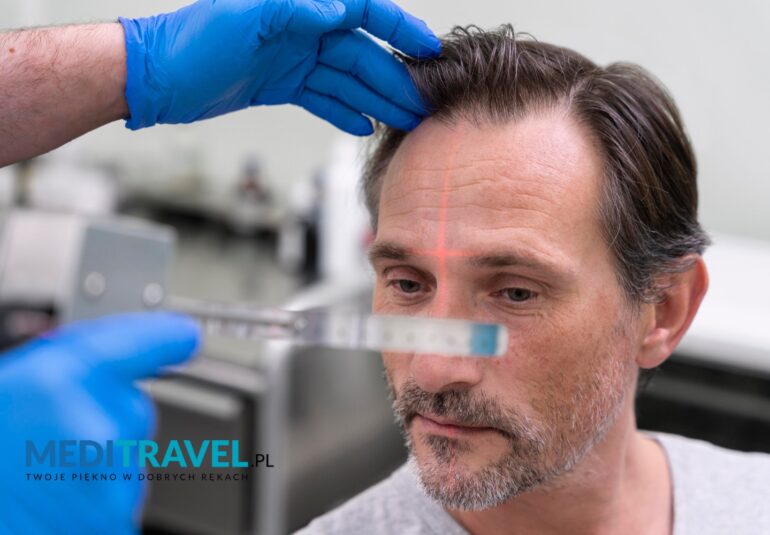
- Hair transplant
-
by Meditravel
Hair Loss Treatment Guide
Did you know that as many as 40% of men will suffer noticeable hair loss before the age of 35? That’s almost half the male population!
So it’s no surprise that there is a high demand for hair loss treatments. If you are starting to go bald and want to do something about it, don’t be afraid because you are in the right place.
In this blog post, we will focus on hair holding options.
Hair transplant
For those of you who don’t know, hair transplants is a relatively popular method of treating hair loss.
It is a minimally invasive surgical procedure in which hair is removed from the donor area (usually it is so much or it hurts the scalp) and transferred to the bald area, i.e. the recipient site.
A hair transplant provides a permanent and natural-looking solution to hair loss and is usually a cost-effective treatment. To be a good candidate for a hair transplant, you must have a healthy scalp and appropriate donor transplants. Find out more during a free online consultation.
What does the hair transplant procedure include?
Hair transplantation can be done with one of the most modern methods: FUE (Follicular Unit Extraction)
FUE extracts individual hair follicles from the donor area and then transplant them into a bald spot. This option does not leave much scarring.
However, several small openings in the donor area should be expected in the immediate aftermath of surgery. They should heal within a few days.
Additionally, the recovery period after surgery is very short. .
It’s worth knowing that the following sites can be used as donor areas for FUE surgery:
- Chin
- Back
- Upper chest hair
- Hair on the head
What Happens After Hair Transplant Surgery?
The day after the procedure, the doctor removes the bandages and washes the scalp. About eleven days after surgery, the scabs will be removed.
You should notice that your hair starts to grow in the transplanted area after about four months. You can expect full growth eight to twelve months later.
What else can I do to stimulate my hair growth?
We understand that hair loss can affect your mental health. You want to do everything in your power to keep the hair on your head. And the hair transplant may be too extreme for you. If you still have hair, there are a few other things you can do to try and stimulate its growth.
Scalp massage with nourishing oils
Scalp massage is not only a great way to relax and unwind, it also improves blood flow to the scalp. Almond and coconut oil are a great choice if you want to stimulate hair growth!
Eat healthy
You may not realize it, but your food choices do affect the health of your hair. So be sure to maintain a balanced diet to get all the nutrients you need.
Protein is essential, but don’t eat excess protein as it will cause hair loss.
In addition to making sure you are getting enough protein, be sure to eat plenty of iron-rich foods. They include:
- Chicken
- Fish
- Broccoli
- Spinach
- Kale
Be good to your hair
It may seem obvious, but you need to take care of your hair. If you lighten or dye your hair to fight gray hair, you are exposing it to harsh chemicals.
Naturally, this can make your hair more brittle and thin, leading to breakage and damage and making it prone to baldness.
Chemicals also inevitably make their way directly to the scalp, potentially damaging the hair follicles and thus affecting hair growth.
Are you interested in treating hair loss?
If you’re interested in hair loss treatment, our frequently asked questions about hair transplants will likely help you.
We invite you to check them!
Alternatively, if you have any questions about this, please feel free to contact us. One of our medical consultants will contact you as soon as possible.



